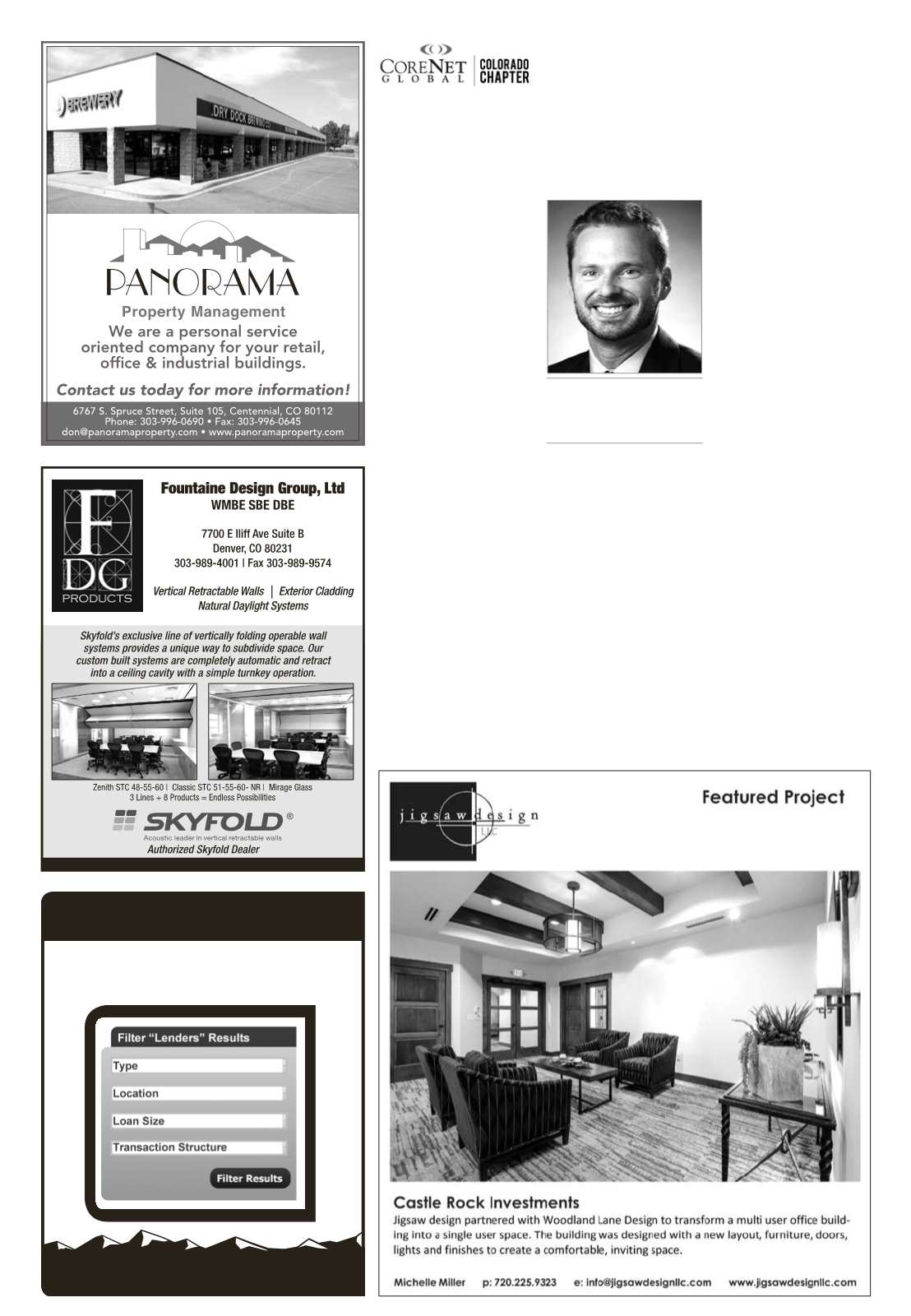
Page 4AA —
COLORADO REAL ESTATE JOURNAL
— November 19-December 2, 2014
FIND FINANCING
Visit
crej.com,
then simply select the property type,
location, loan size, and loan type to find lenders
matching your search criteria.
Spotlight
U
nder pressure to
unlock enterprise value
beyond cost savings,
corporate real estate departments
are deploying strategies that
enhance employee engagement
and productivity. Attracting and
retaining talent and optimizing
productivity are top priorities for
companies. Many are pursuing
any initiative that can make a
difference, although the ability
to measure productivity results
remains limited.
CRE leaders who have engaged
in workplace strategy initiatives
may believe their role in fostering
engagement and productivity
is finished. In reality, workplace
strategy is a great first step in
showing how a well-thought-
out CRE program, working
collaboratively with HR, IT and
other internal teams, can help
an organization in its talent
recruitment, job satisfaction and
work quality. On the inverse,
groups with outmoded or
unappealing work environments
may be unable to compete
for the workers they need. In
fact, we see organizations that
depend on knowledge workers
approaching a crossroads on
engagement strategy, with growth
and reputational strength on
one path and enterprise risk on
the other. An experienced CRE
team is perfectly positioned to
guide organizations down the
right path, drawing on their
skills in collaborative project
management and change
management as well as real estate
knowledge.
n
CRE’s Impact on
Productivity.
The connection
between good CRE practices
and employee productivity is
actually more fundamental than
many people realize. Virtually
everything CRE does is aimed
at enhancing and streamlining
the employee work experience
– creating environments that are
convenient, comfortable and
aesthetically pleasing, to provide
employees with the resources
and frame of mind to do their
best work. To the extent that
productivity can be correlated to
these strategies, the impact is not
just positive, but compelling as
an argument for driving bottom-
line value. In short, the more
organizations understand the
value of engagement-oriented
CRE strategies, the more time
and capital they‘re willing to
invest to realize additional
productivity gains. The rationale
is simple: The occupancy cost
of a typical office is a fraction
of its staff cost, so a real estate
strategy that leads to a modest
improvement in productivity
may justify a significantly higher
occupancy cost. In practice,
however, that rationale usually
depends on the CRE team being
able to measure the impact of
its strategies on productivity – a
challenge that has not been fully
overcome.
A well-designed program
follows a basic six-step
process that’s familiar to
CRE professionals who have
implemented other internal
change initiatives:
1. Develop a baseline
measurement:
Understanding
the situation from the beginning
is vital to your ability to quantify
success later on. Tactics such as
targeted surveys of employees,
focus groups, and a review of
existing facility conditions and
employee programs help the
team identify opportunities and
threats, and set the stage for
measurable improvement.
2. Conduct opportunity
assessments:
Armed with
baseline data, the team can
identify opportunities relating
to workplace amenities, the
condition and location of
facilities, mobility strategy and
sustainability.
3. Estimate costs and benefits:
The cost/benefit calculation is
different for engagement than
for cost containment strategies.
Instead of a direct payback or
ROI weighed against the upfront
cost, engagement strategies rely
M. Gregory Bante
Senior Vice President/National
Director,
JLL


